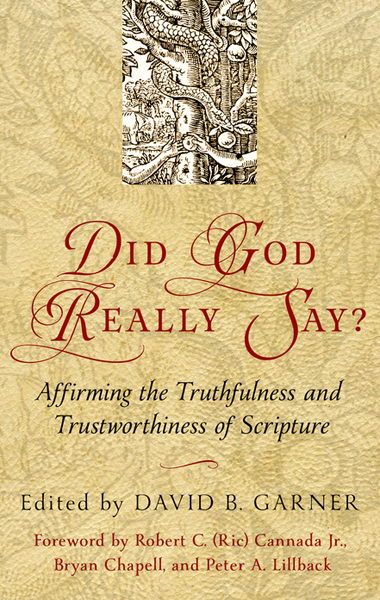
A note from Executive Editor, Jonathan Master:
Theology matters. Place for Truth has no interest in smoothing over the rough edges of disagreements within the Reformed confessional tradition. But we also know that debates can often descend into name-calling and straw man arguments. Over two days, we are posting two brief summaries – one by a pastor of paedo-baptist persuasion, one by a Baptist pastor – on a subject that matters. We hope you’ll read both. They’ve each read the other’s article, and they’ve both presented their own arguments clearly and fairly. Both men argue – as you’ll see – from a theological perspective that reflects the framework of the Reformed confessions. Neither backs down. But the arguments they employ, and the spirit with which they employ them, are worthy of our time and attention.
The practice of baptizing professing believers is grounded upon two complementary foundations. The first is an argument from the covenants of Scripture. The second is an argument from the commands of Scripture related to those covenants. Credobaptists and paedobaptists often assume, or argue, that the people of a given covenant receive the covenant sign. Thus, in the case of the subjects of baptism one must simply identify the covenant people. This is insufficient. The administration of covenantal ordinances is governed by specific laws, which must be obeyed strictly. For example, women were members of Abraham’s covenant but they were not recipients of its sign, circumcision. Likewise, infant males were circumcised, but only on the eighth day. As a result, to determine the subjects of baptism one must first identify and distinguish the covenants involved and then examine the accompanying laws.
1. A positive credobaptist argument asserts that the relevant covenant involved is the new covenant, and that this covenant is distinct from the biblical covenants that preceded it in history, particularly the Abrahamic covenant. Simply put, the Abrahamic covenant promised earthly blessings to an earthly people (Abraham and his offspring) in an earthly land. This covenantal relationship was expanded and developed in the Mosaic covenant and the Davidic covenant (the Mosaic covenant added laws for life in Canaan, and the Davidic covenant provided kings over the people). These three covenants established and governed the kingdom of Israel, comprised of Abraham’s people. The new covenant (i.e., covenant of grace) promises heavenly blessings to a heaven-bound people. Thus the new covenant is established on better promises, different promises. The new covenant alone is the covenant of grace, distinct from the Israelite covenants.
2. The kingdom of Israel and the kingdom of Christ (the church), though distinguished by their covenants, are related as scaffolding is to a building. Abraham’s natural offspring were tenant workers, builders, given a promise of the Messiah’s birth and charged with preparing the way for his advent (Matthew 20:1-16; 21:33-46). Nevertheless, though the Messiah belonged to Israel, Israel did not automatically belong to the Messiah. The kingdom of Israel terminated in the kingdom of Christ and was dismantled, like scaffolding. Jesus was not the chief cornerstone of the kingdom of Israel, nor were the apostles the foundation (Psalm 118:22; Isaiah 28:16; Matthew 21:42; Acts 4:11; Ephesians 2:20; 1 Peter 2:6-7). Jesus established the kingdom of God based on regeneration, repentance, and faith. He preached to his own people, Israel, but his true and abiding people were of a kingdom that is not of this world. Jesus welcomes as his own all who believe in him, and the rest are condemned for their sinful unbelief. Faith in Christ, given only by God, defines Christ’s people.
3. Throughout Israel’s history, many understood the messianic promises and looked to Jesus in faith prior to his advent (Hebrews 4:2-3; 11:13-16). The people of God, considered according to the headship and benefits of Christ (and thus the church), did not begin with the incarnation. This was possible because the Israelite kingdom and its covenants were typological. Typology sustains two truths: on the one hand a type had significance in its own context while on the other hand a type pointed away from itself to a greater meaning in Christ, his kingdom, and his covenant. As a footprint is not a foot, nor is a shadow a person and yet they give information about what they represent, so also a type is not its antitype but reveals the antitype. The author to the Hebrews states quite plainly that the blood of the Israelite sacrifices could not forgive sins. Why? Because although those sacrifices had meaning in the Israelite context, i.e., purification of the flesh, they were not Christ’s sacrifice and could not purify the conscience (Hebrews 10:1-4, 12-14). Paul treats God’s dealings with Abraham the same way by calling believers the children of Abraham and finding a greater meaning in the word “offspring” as relating to Christ rather than simply Abraham’s posterity (Galatians 3:7, 9, 16, 27-29). It is not one or the other, as though promises were made only to Abraham and his natural children or to Christ and his offspring (Abraham included). It is both, each with its particular but related meaning in a typical or antitypical context. And thus the kingdom and covenants of Israel were not the kingdom and covenant of Christ though they were driving towards his birth and revealing truths about him all along the way. Old Testament saints were saved by the promise of one who was to come, and the covenant that he would establish. Consequently Baptists do not use the kingdom of Israel and its covenants as the pattern for the church. They are distinct.
4. We can add further clarity to the membership of a given covenant by looking at federal headship. God establishes covenants with mankind through federal heads, and designates the offspring they represent. Adam, Noah, and Abraham each represented a group of people, their natural offspring. David represented his natural offspring in the Davidic covenant, and he and his sons represented the nation of Israel in the Mosaic covenant. Christ also represents a group of people, his natural (or supernatural) offspring—the elect.
5. God the Father appointed God the Son as a covenant head in the covenant of redemption. The Servant Songs of Isaiah provide a glimpse into this appointment (Isaiah 42:1-7; 49:1-13; 50; 52:13-53:12). Jehovah declares that the Servant of the LORD will see his offspring by offering himself as a sacrificial substitute through which they will be accounted righteous (Isaiah 53:10-11). The Servant represents a people, and their sins are forgiven in his blood. This is a description of the new covenant, established in the blood of Christ and bringing forgiveness of sins to all of Christ’s people (Jeremiah 31:31-34; Matthew 26:26-29; Hebrews 8). The gospels contain wonderful expressions of Jesus’ self-conscious understanding of his mission, being sent by the Father to redeem a specific people (Luke 4:16-21; John 6:35-40; 8:42-47; 10:25-30; 17:1-26). We thus use the covenant of redemption, not the Abrahamic covenant, as the pattern for covenant membership in the new covenant because that is where Christ’s federal headship is established.
6. Christ’s offspring are born by the regenerating power of the Holy Spirit and united to Christ by the Spirit and through faith. As Paul says in Romans 8:9, “Anyone who does not have the Spirit of Christ does not belong to him.” For these reasons, we must recognize the seriousness of a claim to Christ and his covenant. It is a claim to the possession of salvation.
7. Looking to the parent-child relationship is a misdirected attempt to understand covenantal membership. Redirecting our attention to federal headship brings clarity and scriptural precision to the issue. We blame Adam, not our parents, for the curse. The Israelites looked to Abraham, not their parents, for a claim to Canaan and its blessings, and to the conduct of the king, not their parents, for tenure in the land. So also, children must look to Christ, not their parents, for a claim to his covenant. Consequently, there has never been a covenant wherein “believers and their children” constituted the paradigm for covenant membership. The promise (salvation in general, and the indwelling of the Spirit in particular) is proffered to them, just as it is to the whole world (Acts 2:16-41). We are born under Adam’s federal headship, and no one escapes the domain of darkness until God transfers them “to the kingdom of the beloved Son, in whom we have redemption, the forgiveness of sins” (Colossians 1:12-14).
8. The first seven arguments demonstrate the distinction of the new covenant from the Israelite covenants and the restriction of its membership to the federal headship of Christ. We can now examine the covenant’s commands. This is important because consequential reasoning (“if this, then that”), though important, valid, and necessary in theology in general, is not valid in the observation of positive laws (laws that depend only on what is commanded). Only a command from Scripture, whether from Christ, the epistles, or the Apostles’ example can institute and regulate our new covenant sacraments of baptism and the Lord’s Supper. Not only would it be illegitimate to use another covenant’s ordinances to govern the new covenant, but also one cannot deviate from God’s commands based on inferences. If God requires the firstfruits of the flock, surely the firstfruits of my fields will please him. Not so (Genesis 4:1-7; Leviticus 10:1-3).
9. Christ’s command is to make disciples of the nations and then to baptize them (Matthew 28:18-20). Candidates for baptism are those who have responded to the gospel in faith (Acts 2:41). This concurs with the nature of the new covenant and the Apostles’ example. Even in the case of the relative “silence” of household baptisms, which one tends to read through the lenses of the extensive systems that precede them, it can at least be said that while no infants are mentioned, household-inclusive professions of faith are mentioned (Acts 10:44-48; 11:14, 17; 16:31; 18:8).
10. The objective nature of the covenant, and the subjective nature of profession of faith produce a robust Baptist ecclesiology and doctrine of baptism. The church is the kingdom of Christ, established and governed by his covenant and filled with his people, born again by the power of the Holy Spirit. Election and regeneration are objective realities of the covenant effected by God himself. But how is the visible church to be governed? How are the children of God identified? The newborn cry of a child of God, no matter their age, is faith in Jesus Christ. And by one’s doctrinal and practical profession of faith individuals are admitted or removed from the church.
11. Because we believe that faith is the gift of God (Ephesians 2:8) and that all those who call upon the name of the Lord will be saved (Romans 10:13), we have scriptural reasons to presume that all professing believers are true children of God. But because a profession of faith is subjective, there will be false believers in our midst. What is their relation to Christ’s covenant? Objectively, there is none. They do not belong to Christ, supposing they never repent and believe. However, they are held accountable for their treason. When a spy is discovered, a country should not release him to his own land under the false notion that they do not have authority over him. Quite to the contrary, the spy is accountable to the laws of the land in which he committed his crimes. So also, false believers are not released without action. They are accountable to the King, Jesus Christ, and they are to be removed from the body of Christ by excommunication. The warning passages of Scripture cause the sheep to flee to Christ and the goats to flee from Christ.
12. Admitting and removing individuals based on profession of faith in turn produces an identical proleptic value for joining and leaving the church. Those who join the kingdom of Christ claim salvation in him while those who are expelled are declared outside of salvation, both according to human judgment operating with scriptural criteria and commands.
13. Baptism portrays the promises of God and the believer’s trust in them. It symbolizes God’s promise that all who trust in Christ have entered death and judgment in him and emerged as new creations. Baptism is also the individual’s public affirmation of trust in those very promises and a declaration that they are a new creation. Buried with Christ in the waters of death, the believer rises, symbolically, alive in him (Romans 6:1-11). It is not a symbol of what might be in the future, but what the individual claims is indeed presently true.
14. In conclusion, everything begins and ends with Jesus Christ. We must be faithful to his covenant and his commands. Baptists believe the Scriptures teach that Christ’s covenant forgives the sins of all of its members, that false sheep are simply false sheep, and that baptism is a symbol of the objective realities of the new covenant and the believer’s participation in them. Knowing that all who call upon the name of the Lord will be saved, let us strive together with our paedobaptist brothers, whatever our differences on this point, to proclaim that precious name to the world.
 Sam Renihan grew up in New England, the son of believing parents. His family moved to California in 1998 so his father, a pastor, could teach at the Institute of Reformed Baptist Studies in Escondido. Sam was married to Kimberly in 2006, and their son Owen was born in 2008. He graduated with a BA in Spanish literature and culture from the University of California, Irvine in 2009 and completed an MDiv at Westminster Seminary, California in 2012. Sam is currently a pastor at Trinity Reformed Baptist Church in La Mirada, California and is working on a PhD in Baptist historical studies through the Free University of Amsterdam.
Sam Renihan grew up in New England, the son of believing parents. His family moved to California in 1998 so his father, a pastor, could teach at the Institute of Reformed Baptist Studies in Escondido. Sam was married to Kimberly in 2006, and their son Owen was born in 2008. He graduated with a BA in Spanish literature and culture from the University of California, Irvine in 2009 and completed an MDiv at Westminster Seminary, California in 2012. Sam is currently a pastor at Trinity Reformed Baptist Church in La Mirada, California and is working on a PhD in Baptist historical studies through the Free University of Amsterdam.
The Alliance of Confessing Evangelicals is member supported and operates only by your faithful support. Thank you.















 © Alliance of Confessing Evangelicals
© Alliance of Confessing Evangelicals


